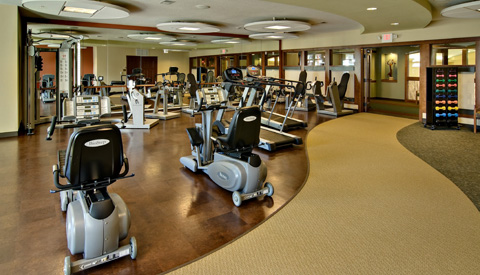Gyms in your Building: Clean the Equipment in your Fitness Centers!
Will owners use it? Funding it with condo funds? What you will need with Development? Expert advice? upkeep and questions?
We spoke with Commercial Fitness Products, and its
Owner Richard Wasserlauf
5034 Hiatus Road
Sunrise, Florida 33351
I can think of a building we worked on a short time ago bringing a new designed fitness facility in their condo.
 The committee figured they’d be able to pay that money back to the reserve in five years, assuming 25 percent of the building’s residents would join. (“It was guesswork,” says Richard.) They charged a one-time sign-up fee of $300 and $250 per year for the first person in a unit and $150 for each additional unit resident.
The committee figured they’d be able to pay that money back to the reserve in five years, assuming 25 percent of the building’s residents would join. (“It was guesswork,” says Richard.) They charged a one-time sign-up fee of $300 and $250 per year for the first person in a unit and $150 for each additional unit resident.
“They paid it back in less than two years,” says Richard. Sixty-five of the building’s 100 units belong to the gym—84 residents altogether. The early success enabled the committee to cut the yearly fee in half, to $125. “They still covered operating costs,” says Richard, “and allocate about $3,000 a year for equipment replacement—which hasn’t been necessary yet—and continue to contribute $2,000 to $3,000 a year to the reserve fund.”
The Building, a 27-story, 156-unit cooperative in Manhattan is a success story. working with developers and board members, helped get the gym project done, converting a 500-square-foot room in the basement into a gym with a budget of a mere $30,000 taken from the reserve fund. Residents pay $225 per year for membership.
“The gym has about 100 members today,” says Richard. “We’re well ahead of the game. The membership dues more than replenishes the reserve that we took out for it, and pays for the upkeep.” he adds that, “The building has a healthy turnover of apartments and 90 percent of new buyers join the gym.”
Building the Gym
Buying workout equipment is the easiest part of the build-out. “A lot of people think they are going to take the bike room, put equipment in it, paint the walls, and call it a day,” observes Richard Wasserlauf, Owner of Commercial Fitness Products, a leading gym equipment retailer. “In Sunrise Florida, that is not going to cut it.”
The first thing you need to need to consider, advises Richard, “is what construction and code obstacles you might need to overcome to pull the project off.” Potential problems include open asbestos, lead paint on the walls, mold or fungus problems, and particularly in basement spaces, pipes that sweat in the summer. Basement spaces also have the issue of exposed pipes, conduits and drain lines. As older buildings replace systems, they often leave old piping, electrical conduits and phone lines in place. Each should be tested and removed if inactive.
HVAC is perhaps the most important system in the facility. To meet city code, the gym space must have 15 percent fresh air flowing into the space. If the proposed space for the gym is not already equipped with central air conditioning, ducting will need to be installed if the room does not have a window. If there is a window, you need to install a unit with adequate power.
“You’re looking to maintain 68° year round—that often means running a cooling system practically year round,” says Richard, both for safety and comfort—to keep members coming back to the club. If there is any sort of landing or ledge outside the window on which to set a compressor, Heidings recommends a split system, available for around $2,000.
Another important code issue with which the gym room must conform is egress—providing a clear and unencumbered path out of the room if there is an emergency such as a fire or loss of power.
Bring in a Pro
To get a clear and objective evaluation of the condition of the room, and to get an idea of the construction costs entailed, it’s best to consult an architect right up front, says Richard. “If you find that your construction costs are very high, you may just say this is just something we cannot afford right now—or ever,” unless or until there is a more suitable space available in the building.
Some of the major design challenges is inclusion of light. Most often spaces designed for this purpose are in basements or underutilized rooms, and may not have natural light to make the space breathable. Lighting design, therefore, becomes very important. Many gyms find that fluorescent in fixtures aimed upward to soften the light are an effective and inexpensive alternative to high-end lighting.
You should also note if the floor has adequate space and structural capacity for both the equipment and the occupants, he says.
Another element to consider, say the designers, is noise—both kinds: vibration caused by things like treadmills, which primarily travels vertically downward; and audible, like the clanging and dropping of weights or the thumping of runners. A thick rubber floor like the ones commonly used in commercial gyms addresses both. Rubber flooring for a 600-square-foot gym costs around $5,000, say the pros.
A particularly pernicious vibration problem can be solved by laying a floating floor on top of the existing and then putting rubber over that, plus sealing and caulking every edge of the space as well as every pipe intrusion and structural column. A dropped ceiling filled with insulation will keep noise from traveling upward. In luxury condominiums, “Rubber flooring comes at different price points. some have the capability to deliver custom colors and complement the upholstery on the equipment.
The gym must have mirrors on approximately half the wall space in the gym, corresponding to the placement of the stretching/ab area and the apparatus. The price range for mirror panelling is typically from $3,000 to $5,000. Lastly, a computerized electronic lock on the door not only keeps the room secure, but keeps track of who is in the room and when, in case anything is damaged or stolen. Plastic keycards, which can easily be passed around to non-member residents, have been replaced by palm or fingerprint scanners, available for under $1,000.
Layout and Design
A well thought-out private gym provides a full-body workout, which includes warm-up, stretch, cardio, strength training and cool-down. According to Commercial Fitness Products, cardio equipment will generally be the most used. A 500-600-square-foot gym will typically have two treadmills (approximately $2,000 each), two elliptical machines ($1,500 each), a recumbent bike ($2,000), an upright bike (under $2,000), a multi-station weight apparatus (around $5,000) and at least two racks of free weights and two benches (under $1,000). A popular, fabulously versatile new apparatus is the functional trainer (around $3,500), which uses two adjustable-height and width pulleys attached to individual weight stacks and offers a wide range of exercises.
The gym above, containing all commercial grade brand-name equipment, including delivery and installation, should come to about $30,000 plus tax. .
It’s important, says Richard, to decide what’s necessary and what’s not. For example, consider whether adding a shower/locker room is essential. Perhaps residents would prefer using their own apartments for that function rather than the in-house gym, where maintenance could prove expensive or difficult. Other concerns are consulting with an attorney and insurer on liability issues, and making sure the facility is secure using safety-conscious materials and products.
Building insurance almost always covers injury and mishaps in the gym (just as it does in the laundry room), as long as no one under 16 is allowed admission. No additional policy is usually required—though of course it’s wise to double-check with your building’s insurance carrier to make absolutely sure.
The life span of equipment in a gym varies from piece to piece in a co-op or condo gym, conservatively, treadmills can be counted on to last about five years, elliptical machines about seven and bikes about 10. Weight machines last indefinitely, requiring only occasional reupholstering and replacement of pulleys and cams. Regular professional maintenance will help extend the life of all the equipment. Contracts, usually costing around $1,200 a year, include inspection, adjustment and lubrication of all moving and mechanical parts.
In addition to quarterly maintenance visits, the room has to be cleaned every day. This is typically done by existing building staff, the chore includes wiping down all the equipment with disinfectant, vacuuming the floor, emptying the garbage and cleaning the bathroom if there is one.
Adding TV screens to each of the six cardio pieces above would add at least $6,000 to the cost of the package. Richard says about half the gyms he equips go without any TVs at all to save on cable bills, figuring people bring their iPods for entertainment. Some have just two BestBuy or Costco-bought flat screens on the wall, using their speakers to produce the sound. Other more extravagant buildings spend tens of thousands on individual touchscreens with wireless internet as well as cable TV.
You’ve Built It: Now Make Sure They Come
In order to let residents know that their new gym is open and fully operational, “Do as many kickoff events as you can,” Richard advises. “You’ve got to get a lot of energy down there.” As soon as the gym is finished, do a wine and cheese ribbon-cutting ceremony. Later on, bring in a trainer to lead several training sessions for four or five shareholders at a time.
“The building can offer regularly scheduled yoga, stretch and pilates mat classes, because while yoga studios that offer classes without membership abound in Florida, “there are very few places people can go to take pilates classes without joining an expensive gym.
Yoga and pilates classes can generate a modest extra income for the building—and at the same time help keep shareholders and tenants healthy. we’ve just begun a Fitness After Fifty program that seems to be going well.” geared to the older owners.
The bottom line is that not only can a well-designed, well-maintained gym facility add value to your building, it can help boost community spirit as residents bond over the iron, and it helps keep your owners and shareholders healthy. And that’s a winning equation.
 Call for all of your Fitness needs, Throughout South Florida.
Call for all of your Fitness needs, Throughout South Florida.
Find out more about:
Commercial Fitness Products
Richard Wasserlauf
Address: 5034 Hiatus Road
Sunrise, Florida 33351
Phone: 954-747-5128
Fax: 239-938-1462
E-Mail: SALES@COMMFITNESSPRODUCTS.COM
Web: http://www.commfitnessproducts.com
And Find us on the
Find-A-Service Directory on SFPMA.COM
https://sfpma.com/listing/commercial-fitness-products/
Like this:
Like Loading...
Tags:
Building Maintenance,
Fitness Rooms Articles,
Management News,
Member Highlights





 For starters, lets differentiate between “paint” and “coating”. All coatings are paints, but not all paints are coatings. Generally speaking, paint is used for aesthetics, and coatings are used for performance. Coatings are paints that serve a purpose beyond just the aesthetic color and finish. In addition to color and texture, coatings can provide waterproofing, elasticity, breathability, dirt shedding and corrosion prevention properties. With these additional properties typically comes added cost. As such, it is important to make sure you are selecting the correct coating with proper preparation and application techniques to get the best long-lasting performance and return on your investment.
For starters, lets differentiate between “paint” and “coating”. All coatings are paints, but not all paints are coatings. Generally speaking, paint is used for aesthetics, and coatings are used for performance. Coatings are paints that serve a purpose beyond just the aesthetic color and finish. In addition to color and texture, coatings can provide waterproofing, elasticity, breathability, dirt shedding and corrosion prevention properties. With these additional properties typically comes added cost. As such, it is important to make sure you are selecting the correct coating with proper preparation and application techniques to get the best long-lasting performance and return on your investment.

 If your commercial property sustains enough damage in a short enough time to cause you to consider shuttering the doors, you have an emergency repair. This could mean:
If your commercial property sustains enough damage in a short enough time to cause you to consider shuttering the doors, you have an emergency repair. This could mean:
 When developers create residential communities and commercial areas, they need to take into account how much water needs to be stored or moved in order to prevent the project from flooding during major rain events. Through careful planning and design, they route stormwater away from our homes and into a system of lakes and canals. The size and number of lakes in our communities are a result of those calculations. Lakes are dug to create a storage area for water runoff from storms. The fill dug from the lakes is then used to raise the elevation of the homes around them.
When developers create residential communities and commercial areas, they need to take into account how much water needs to be stored or moved in order to prevent the project from flooding during major rain events. Through careful planning and design, they route stormwater away from our homes and into a system of lakes and canals. The size and number of lakes in our communities are a result of those calculations. Lakes are dug to create a storage area for water runoff from storms. The fill dug from the lakes is then used to raise the elevation of the homes around them.











 The committee figured they’d be able to pay that money back to the reserve in five years, assuming 25 percent of the building’s residents would join. (“It was guesswork,” says Richard.) They charged a one-time sign-up fee of $300 and $250 per year for the first person in a unit and $150 for each additional unit resident.
The committee figured they’d be able to pay that money back to the reserve in five years, assuming 25 percent of the building’s residents would join. (“It was guesswork,” says Richard.) They charged a one-time sign-up fee of $300 and $250 per year for the first person in a unit and $150 for each additional unit resident. Call for all of your Fitness needs, Throughout South Florida.
Call for all of your Fitness needs, Throughout South Florida.